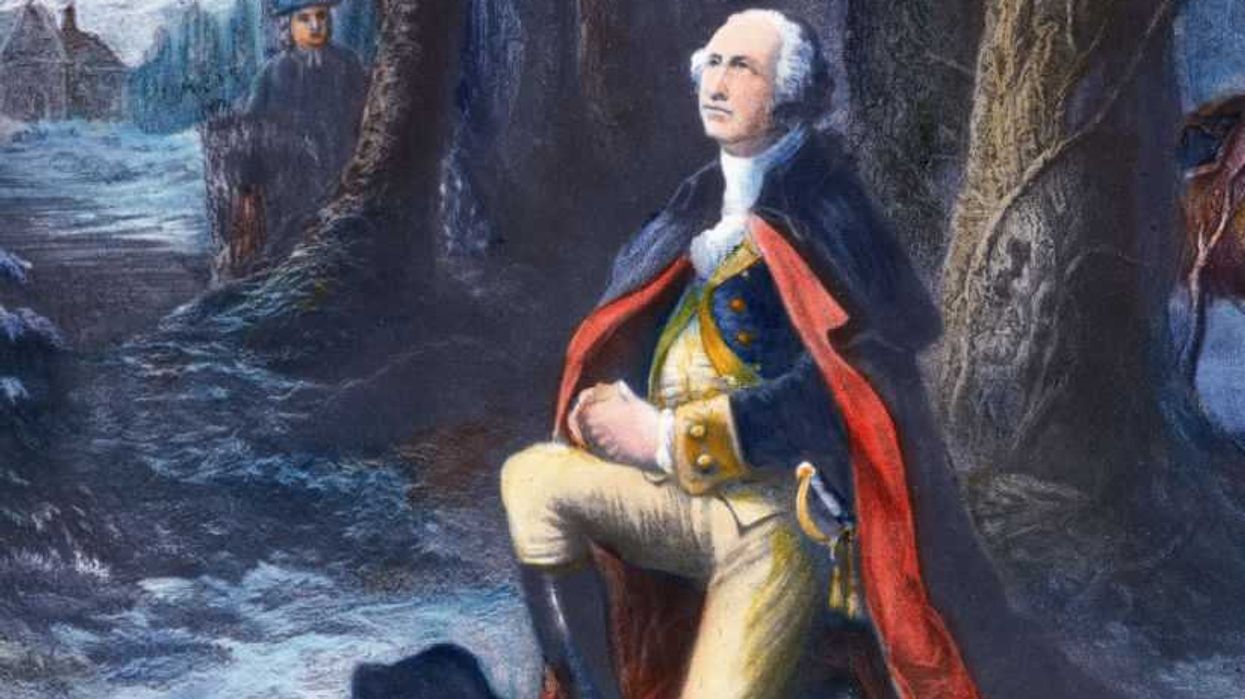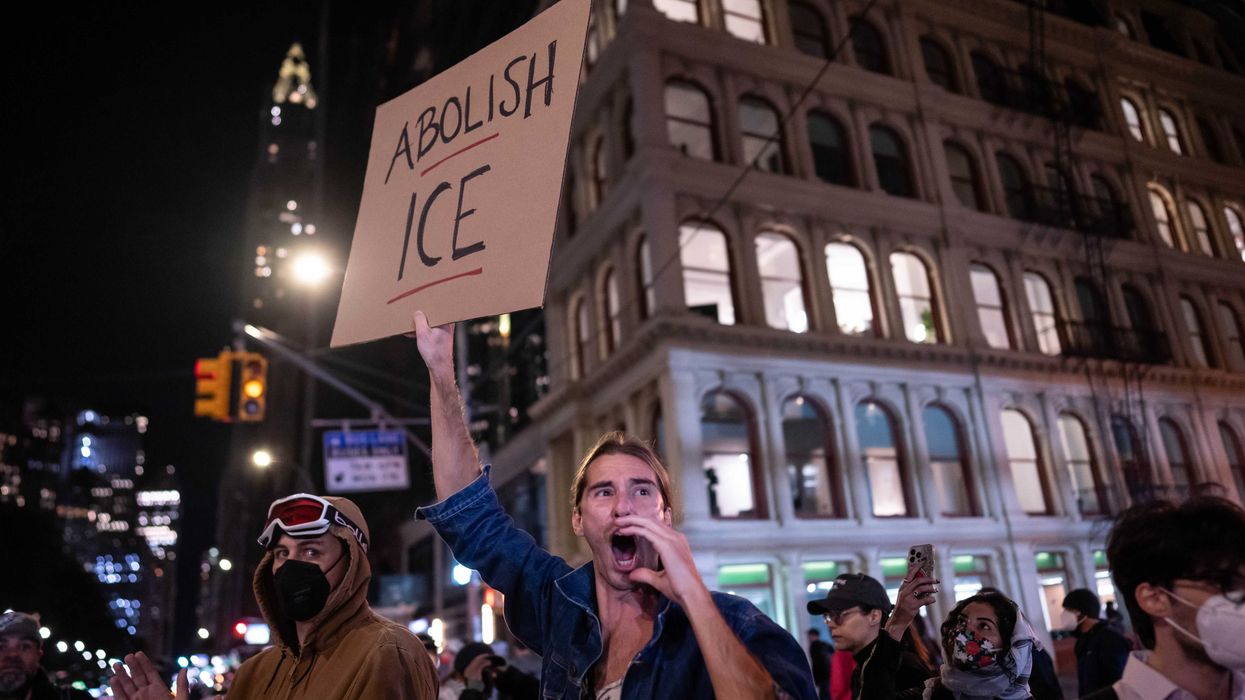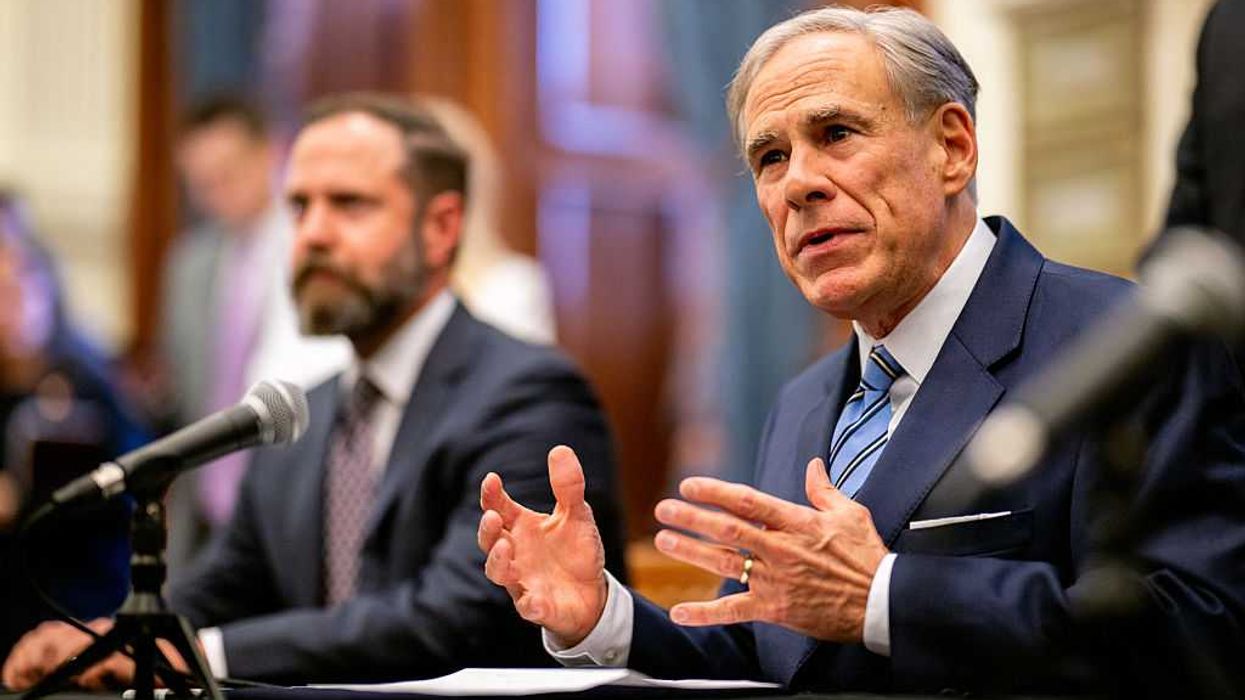Editor's note: This article was originally published on TheBlaze.com.
Disney has had a terrible birthday. To celebrate the mega-corporation's 100-year anniversary, you can buy special-edition beanies and commemorative dollhouses and tiny Disney-character statues at McDonald's. But the fairy tale of Disney is nearing its end. Because Disney is on a hell of a losing streak. By nearly every metric, the company is failing. It’s like watching a gifted athlete pull his hamstring and, when he tries to keep running, you hope he survives the death-rush.
Disney is on a hell of a losing streak.
On a recent earnings call, Disney CEO Bob Iger admitted, “Quantity can be actually a negative when it comes to quality, and I think that's exactly what happened: We lost some focus.”
He has admitted that Disney’s films have become too obsessed with social causes. As he told Aaron Ross Sorkin at the DealBook Summit:
Creators lost sight of what their No. 1 objective needed to be. We have to entertain first. It's not about messages.
The latest example is “Wish,” a movie that was supposed to serve homage to 100 years of Disney magic but that instead reveals the spectacle of activism: a hacky, uninspiring work of political snobbery too neutered to offer us nobodies anything more than a nodding-off or a swipe of the remote.
The failure of “Wish” is emblematic of the ongoing decline of Disney as a monopolistic empire of creativity.
It’s a movie for activists, by activists; for childless Millennials, by childless Millennials. And, to be clear, there’s nothing wrong with being a childless Millennial. But it’s probably not a great idea for Disney, which has succeeded as a result of young families, to pack its staff with people who don’t participate in, or who even oppose, the institution of family.
It’s a movie for activists, by activists; for childless Millennials, by childless Millennials.
Well, no-luck Disney bet on the wrong side, because the childless Millennial demographic isn’t big on spending, or at least not as much as family audiences are. And another question the Activist Class cannot answer: What long-term political benefits are to be had from an entire generation of childless voters?
Culturally, Disney is homeless, rejected by conservatives and ignored by a growing number of liberals (who also don’t buy Bud Light).
So the predictable take here would be for me to call Disney woke and celebrate its collapse, which is an entirely justified stance. My angle, however, is more about hope — my hope that Disney survives its own prolonged tragedy, that it pulls itself together or, at the very least, that there are a few more lovely moments before it croaks.
For me, this is personal: My house is full of Disney princesses.
In fact, one of my toddler’s favorite phrases is “I love all of the princesses!” We have no doubt seen all of the Disney movies — with the exception of “Strange World,” with its awful reputation, and "Bambi 2," because I’m not falling for that again.
My wife and I know literally every word of "Frozen." Few movies are as personal as it has been — my toddler owns an Elsa version of any imaginable household item, and some of our most beautiful moments involve her dancing in sunlight to “Let It Go.”
Our band-aids are Disney, so when one of us is hurt, we say, “Get me a princess!” As I write, at a desk covered with Disney princess stickers, “Ralph Breaks the Internet” is playing behind me.
Culturally, Disney is homeless.
And this has been a fairly normal American -- even global -- relationship to Disney. Acceptance of every kind. The Forrest Gump of brands, unstoppable in its cultural power.
Disney’s mistake, it turns out, was a series of decisions that gutted it of its political neutrality.
Even my toddlers grew bored with "Wish" after two minutes.
“Wish” hasn't landed well with critics or, more importantly, with audiences, for good reason. It’s a truly bad movie. Hokey. Cheesy. Boring. Part of this is the result of what Bloomberg described as Iger’s “princess problem.”
It goes down as one of the worst Disney animated feature debuts. The “Trolls” movie, which is stronger and more musically adventurous, scored about the same numbers despite having been released one week earlier.
It’s a truly bad movie. Hokey. Cheesy. Boring.
My toddlers, who will stop for nothing but Disney, grew bored with the movie after two minutes. This is unprecedented. Only a week earlier, we attended the latest “Paw Patrol” movie — a much greater movie, from Nickelodeon (Paramount) — and they lasted about 45 minutes before reaching the same level of restiveness.
Anecdotal example, yes, but I can’t think of a clearer metaphor to describe the misguidedness of the activist mindset ruining Disney. A fantastic review of "Wish" by Alan Ng for Film Threat led me to the reality that Disney's dysfunction is deep-seated and activist-driven.
A common activist blunder: Place activism so far ahead of anything else that the supposed medium gets completely neglected.
"Wish" suffers from muddy plotlines and fear of committing any offense.
“Wish” was co-written by Jennifer Lee, the first female chief creative officer of Walt Disney Company, executive producer of “Raya and the Last Dragon,” as well as head of creative leadership for most of the Disney animated feature hits since 2012. She has shaped the latest generation of Disney.
Disney's dysfunction is deep-seated and activist-driven.
Despite the well-deserved acclaim for her part as director and writer of the "Frozen" films, Lee’s legacy could become linked to the growing trend of her work: muddy plotlines — full of dazzle — that spend so much time on quirks that the story gets rushed.
The film centers on Asha, played by Ariana DeBose, a decorated actress, a breathtaking singer, and a rabid activist whose foundation Unruly Hearts Initiative boasts connections to the Trevor Project, Point Foundation, and Covenant House, where DeBose holds a spot on the board. Which — who cares, but also, if the charities were conservative, Hollywood wouldn’t find DeBose’s efforts so laudatory.
The film was designed to drop Easter eggs like rainfall, but the references were mostly distractions. Asha’s seven sidekicks are a throwback to the dwarfs from “Snow White and the Seven Dwarfs,” Disney’s first animated film. (A much better example of meta-Disney is the middle section of "Ralph Breaks the Internet," which has its own shortcomings, but at least they’re hidden beneath outstanding animation, reliable comedy, and decent storylines.)
The central crisis of the film is the duality of power. On Rosas, the Mediterranean island where Asha lives, each person is allowed to materialize one wish, on his 18th birthday. It’s not clear why the people are only allowed to have one wish, and as other critics have observed, many of these wishes are more “goals,” which any person could accomplish.
Nevertheless, the powerful King Magnifico has total control of the blue orbs that contain the wishes. King Magnifico uses a state of exception (“Is it tyranny if it’s for your safety?”) to convince his citizens that he’s a wise, good-hearted, impeccably handsome ruler.
The central crisis of the film is the duality of power.
It’s not clear what Magnifico is protecting citizens of Rosas from. Why is he so stingy with his wish-granting? He certainly does become frightening. “Wacky” is probably a better word. He builds his power by crushing the wishes of his citizens — each time, it kills a part of them, robs them of their essence, and transforms them into a sad, bare life of the evil sovereign.
(For many reasons, the power-obsessed authoritarian king is actually an apt metaphor for Disney as an artistic institution.)
Who’s the real villain, though? If it’s fear that motivates him, fear that his people will suffer from not having their wishes granted, then we have the kind of padded version of evil mocked in an episode of “It’s Always Sunny In Philadelphia,” where the only safe villain is a weather disruption, like climate change.
The power-obsessed authoritarian king is actually an apt metaphor for Disney as an artistic institution.
In other words, the worst-case outcome of Magnifico’s terror is that people feel a tad more bummed out than usual, which has become a reality of modern life.
What is a 17-year-old peasant like Asha to do? Beg for help from the sky. Just like that, a beautiful goofball of a star named Star torpedoes down and starts granting wishes and giving animals the ability to speak. (Symbolically, the star represents the magic of Disney, which has given voice to the voiceless, like animals.)
But “Wish” is terrified of committing an offense. There’s no room for irreverence — and life without irreverence always leads to a weird new kind of profanity. In a neutered world, there’s no room for creation. No room for invention.
"Wish" created a meaningless villain.
Disney can be harsh with its villains, gutting them into nothingness (Gaston, Ursula, Cruella de Vil). But it can also treat them with tremendous compassion — as with Te Kā, the lava monster in “Moana.” “Wish” is so conflicted in its meaningless normative absolutism that it accomplishes neither.
In a song with a beat and hook possibly ripped from the Knife’s brilliant “One Hit,” “Knowing What I Know Now” spells out what exactly makes Magnifico so villainous.
In this truly catchy song, Asha sings that Magnifico is:
More vicious than I could have ever comprehended / When I made a wish and Star came down / This is not what I expected or intended / But now that it's happened I don't regret it / 'Cause now I've seen / Him show his true colors in shades of green / Saying that your wishes aren't safe because of me and / That's a lie, lie, lie, lie.
Beyond the somewhat cringe-inducing lyrics, this song implies that Jiminy Cricket’s entire mission, his wish upon the star, is one of activism.
So why is Magnifico “more vicious than [Asha] could have ever comprehended?” Well, for one, he doesn’t grant every single wish, and that’s just not fair. Also, his tone. Very harsh. He’s also quite mansplainey.
Triumphantly, the peasants stomp, chanting: “I don't think he's prepared for what's coming / A revolution hit the ground runnin’.” This “revolution” winds up being the political equivalent of a child shouting “go away, you silly ghost” as a tornado guts a town. Basically: “We have to steal the king’s power. He doesn’t deserve it. So we have to overthrow him.” On a deeper level, what these privileged writers are likely actually saying is, “I want you to believe that capitalism makes me sad!”
One obvious assumption is that every peasant’s wish is kind-hearted. This is a mistake that Karl Marx made about the proletariat. He assumed all the bourgeois were evil and all the peasant class were inherently good. By rebelling against the king — together — the peasants can overthrow him. Because that’s how oppression works in the wishful mind of a professional activist.
One obvious assumption is that every peasant’s wish is kind-hearted. This is a mistake that Karl Marx made about the proletariat.
So King Magnifico is shrunken into a mirror, then thrown into a dungeon — to be fair, this is the exact fate of Bowser in the (far superior) "Super Mario Bros. Movie." But here it just feels so social-justicey, so hypothetical, too ready to fire into a shower curtain after a glass of wine: The peasants incarcerated the man! (Head explodes, launching neon-dyed hair like shrapnel.)
If activism will save Disney, it's activism against its current activist mania.
The problem with this sort of absolutism is that it can easily be flipped against itself. “Zootopia,” for instance, tells the story of a society secretly controlled by sheep, an attack on predators in the name of safety. This (literal) conspiracy is universal enough to affirm the exact racist or misogynistic or anti-Semitic movements the film’s message assumes to confront.
The same goes for “Wish.” Is it really a figuration of egalitarianism, or is it rather a promotion of a kind of freedom that only capitalism can offer?'
The problem with this sort of absolutism is that it can easily be flipped against itself.
“You’re only allowed to have one wish, and it probably won’t come true” doesn’t exactly sound like Adam Smith. It does, however, evoke imagery of a dying Soviet Union where life itself became a whittled-down promise, a call to be sacrificed that people can’t decline.
The film’s attitude clearly sides with the more collectivist ideology, which flexes the undifferentiation of socialist societies, the inevitable decline into sameness. There is, however, a sense of personal responsibility: “Make your own wishes happen; don’t let a king decide.” Which is a fairly conservative stance.
The film’s attitude clearly sides with the more collectivist ideology.
And oddly enough, activism might very well be the force that saves Disney — but an activism against its current activist mania. “Activist investor” Nelson Peltz wants to pull the company back toward the center.
But for now, Cinderella's castle keeps rotting. “Wish” isn’t going to sell T-shirts or Halloween costumes, let alone branded toothbrushes and fruit snacks. So to whoever will follow in Disney’s Goofy-sized footsteps: Keep hacking at that ugly marble.
***
Thank you for reading. Feel free to send corrections, rants, notes, and outpourings to kryan@mercurystudios.com and follow on X

 Harold M. Lambert / Contributor | Getty Images
Harold M. Lambert / Contributor | Getty Images
 Adam Gray / Stringer | Getty Images
Adam Gray / Stringer | Getty Images Anadolu / Contributor | Getty Images
Anadolu / Contributor | Getty Images Brandon Bell / Staff | Getty Images
Brandon Bell / Staff | Getty Images